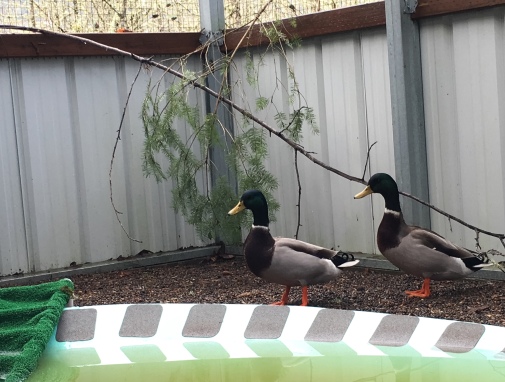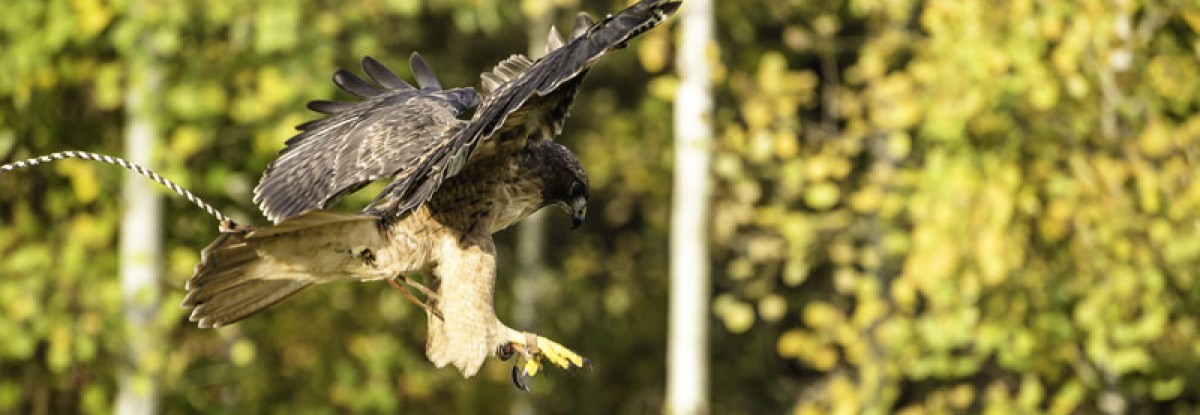In early November, we received calls about two injured mallards at a pond located in Albany. The ducks had been recreationally shot with blow darts and were sadly left to suffer. Archell Banta, one of our dedicated volunteers (and a fellow waterfowl lover), was able to capture both ducks and bring them to our clinic.
Assistant Animal Care Staff volunteer Erika Seirup writes about her experience upon admittance of the mallards:
Many of the patients we receive at CWC are injured by humans on accident (such as car or window collisions). This particular case was disheartening to me because it was purposeful cruelty to wildlife.
I have been a volunteer at Chintimini Wildlife Center for 18 months and haven’t seen an intentional injury to wildlife before. I’ve seen animals that’ve been hit by cars, birds that have flown into windows, and orphans in need of care.
This was a deliberate attack on wildlife and it really surprised me.
The first mallard presented with a dart lodged deep within the left side of his body. Upon further examination we were able to determine that it was stuck in his thigh. The dart was approximately three inches long and he is very fortunate it did not go deep enough to puncture any organs.
The second mallard had been shot in the bill, which also punctured his tongue, pinning it to the roof of his mouth. Mallard ducks are considered “dabbling” ducks (rather than diving ducks) and this type of injury made it impossible for him to properly forage for food.
To eliminate stress and pain, we decided it was best to place the mallards under anesthesia before removing the darts. This way we were able to give a more thorough examination and tend to the wounds without additional stress or accidental harm.

Both ducks recovered quickly, and after careful observation in our ICU they were able to move to an outdoor enclosure.
Outdoor housing for waterfowl includes a pool for swimming and enrichment that helps to encourage the natural behaviors they will need to survive in the wild.

After spending only a few weeks in our care, they were released to a quiet pond where they’ll be safe from harassment and free to live their lives.
While we are happy to report this as a successful wildlife rehabilitation story, this unfortunately is not an isolated incident. Each year there are multiple reports of dart shootings in other areas of Oregon, and more often than not the perpetrator isn’t caught.
Animals shouldn’t be left to suffer – if you see an injured animal that you think has been illegally shot, please call your local authorities (police, animal control, wildlife rehabilitator or State Fish & Wildlife agency) as soon as possible. For a wildlife rehabilitation center near you, check out this state-by-state listing:









One thought on “A Tale of Two Mallard Ducks”